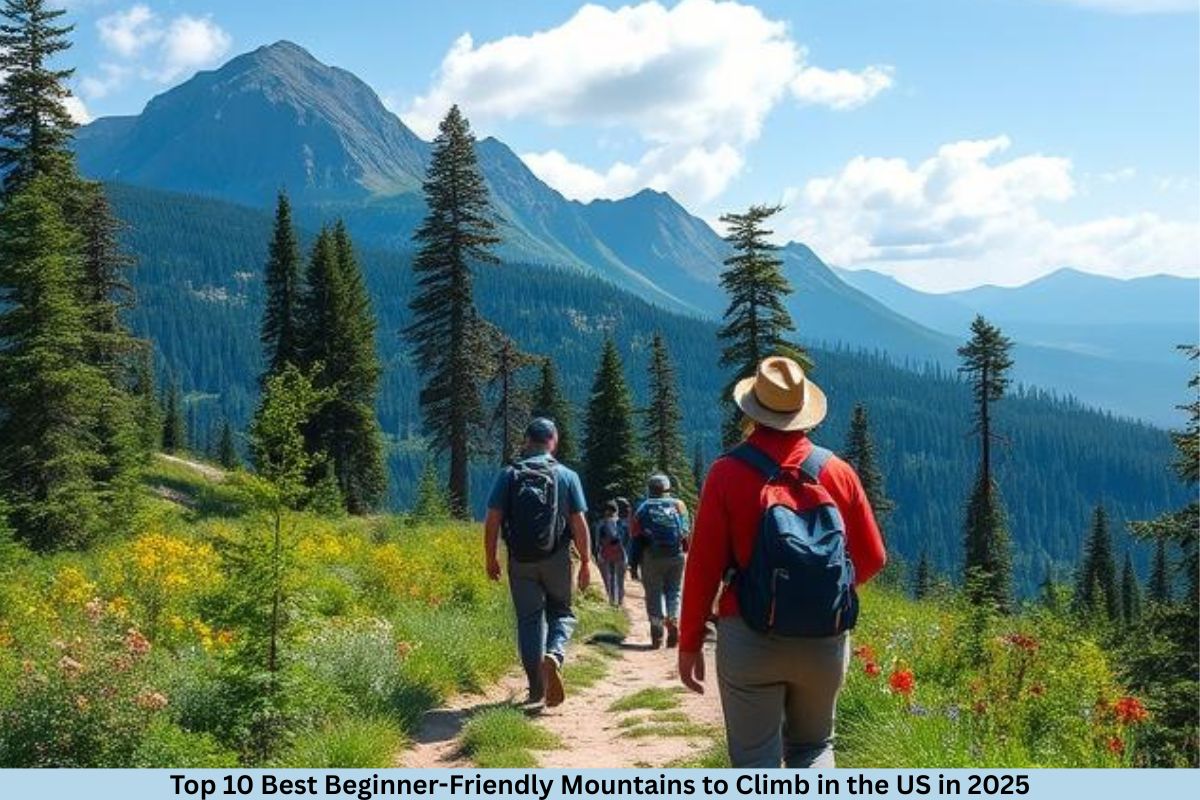There’s something wildly freeing about the open avenue, isn’t there? Windows down, music up, the sun setting in advance of you—it’s no surprise that road trips are a classic American subculture. Whether you’re dreaming of Route 66, the Pacific Coast Highway, or a move-us Odyssey from sea to shining sea, a touch of planning can go a long way. So let’s hit the street with some vital hints for planning a street experience across the US!
Planning Your Route
Decide on the Type of Trip
Are you aiming for a bucket-list coast-to-coast power or an extra-centered regional course, like a tour of the Deep South or the Rocky Mountains? Maybe you want a themed adventure—think a meal’s path, music records, or National Parks. Knowing your “why” enables form the “wherein.”
Must-See Landmarks and Destinations
Make a listing of non-negotiables. Want to see the Grand Canyon? Nashville’s honky-tonks? The Statue of Liberty? Plot these out early so you can plan smartly around them.
Map It Out with Apps and Tools
Apps like Roadtrippers, Google Maps, and Waze are your excellent buddies right here. They assist in visualizing routes, proposing sights, and calculating driving times (and traffic traps!).
Setting a Budget
Estimating Gas, Food, Lodging, and Attractions
Calculate predicted gasoline prices based on your mileage. Add daily allowances for food, hotels, entrance charges, and attractions.
Money-Saving Tips at the Road
- Use gasoline-saving apps like GasBuddy
- Stay in financial accommodations or campgrounds
- Cook meals now and again as opposed to consuming out all of the time
Emergency Fund Considerations
Always have a buffer. Unexpected charges—like a flat tire or a toll—can creep up rapidly. Aim for at least $300-$500 in reserve.
Choosing the Right Vehicle
Car vs. RV: Pros and Cons
A car is incredible for flexibility and higher gas mileage. An RV gives comfort and comfort however is bulkier and dearer. Your choice depends on group length and tour fashion.
Vehicle Maintenance and Pre-Trip Checks
Get an oil alternative, test the brakes, look at the tires, and make certain all fluids are topped off. A nicely-maintained car gives peace of mind.
Renting vs. Using Your Own
If your vehicle isn’t street-ride-equipped, don’t forget to rent. Look into unlimited mileage alternatives and make certain your rental is covered by using coverage.
Where to Stay
Hotels, Motels, and Roadside Inns
Chain hotels are dependable; however, don’t pull away from mom-and-pop locations with individuality. Read critiques to avoid any unpleasant surprises.
Camping and RV Parks
Camping is reasonably priced and delightful, especially in national and state parks. RV parks provide hookups and facilities like showers and Wi-Fi.
Apps for Booking Last-Minute Stays
Apps like HotelTonight, Airbnb, and Booking.com allow you to discover low-priced stays on the fly.
Packing Essentials
Must-Have Road Trip Gear
- Maps and GPS
- Power banks
- Cooler for snacks and beverages
- Reusable water bottles
Clothing and Comfort Items
Pack layers, even in summer. A journey pillow, blanket, and relaxed footwear make a massive difference on long drives.
Emergency and First-Aid Supplies
Always have a flashlight, jumper cables, a first-useful resource kit, a spare tire, and a multi-device on your car.
Staying Safe on the Road
Driving Tips for Long Distances
Take breaks every 2-3 hours. Switch drivers if viable. Fatigue is risky, so don’t push it.
Weather Preparedness
Weather inside the US can change appreciably through place. Keep an eye on forecasts and avoid volatile routes in hurricane season.
Roadside Assistance and Insurance
Have an AAA membership or comparable provider. Make certain your coverage covers road trips or long-distance journeys.
Entertainment on the Go
Playlists, Podcasts, and Audiobooks
Download the content earlier. From actual crime to comedy to self-help, there’s something for everybody.
Games for Passengers
Try classics like “I Spy,” the license plate sport, or trivia apps. They’re best for preserving spirits excessively.
Offline Entertainment Options
Bring books, sketchpads, or journals. Not every place will have accurate service, and unplugging may be refreshing.
Eating Well While Traveling
Meal Planning and Prep Tips
Pre-packaged meals like sandwiches, wraps, or salads. They shop for money and are healthier than fast food.
Best Road Trip Snacks
Nuts, granola bars, fruits, jerky, and trail mix are nutritious and mess-free.
Discovering Local Eats
Don’t leave out local specialties—chowder in New England, BBQ in Texas, deep-dish in Chicago. Yelp and TripAdvisor help you locate gemstones.
Keeping It Flexible
The Beauty of Unplanned Stops
Some of the quality moments appear whilst you stray off-script. See a roadside oddity? Pull over. You won’t regret it.
Handling Delays and Detours
Have a plan B. Construction, weather, or fatigue can all purpose modifications. Flexibility makes for smoother travel.
Listening to Your Travel Pace
Don’t cram an excessive amount of in. Allow time to breathe, explore, and enjoy.
Capturing the Journey
Photography Tips for the Road
Golden hour (sunrise/sundown) makes the entirety magical. Get shots of your crew, now, not simply the landscapes.
Journaling or Vlogging
Even a few minutes a day allows you to remember the little info.
Sharing on Social Media
Create highlight reels or day-by-day tales. Friends and family love following your adventures.
Connecting with Nature
National Parks and Scenic Byways
Don’t bypass Yellowstone, Yosemite, or the Blue Ridge Parkway. There are several pleasant things inside the international.
Best Hikes and Viewpoints
Research quick hikes or overlooks close to your route. They’re remarkable approaches to stretch and soak in the beauty.
Eco-Friendly Travel Habits
Recycle, keep away from littering, and use reusable items. Let’s preserve the roads smooth that others to revel in.
Engaging with Local Culture
Small Towns and Local Festivals
Attend a nearby fair, farmer’s marketplace, or small-city occasion. It’s an amusing manner to revel in true Americana.
Historical Landmarks
From Civil War websites to colonial towns, the United States is full of records well worth preserving.
Regional Foods and Traditions
Try the weird meals. Embrace the accents. These moments make your avenue journey unforgettable.
Tech Tools for Road Trippers
Navigation Apps
Google Maps, Waze, and Sygic are first-rate; however continually maintain a paper map just in case.
Travel Planners and Itinerary Apps
Use Roadtrippers, TripIt, or maybe Google Docs to prepare your journey.
Safety and Emergency Tools
Download FEMA, Red Cross, and emergency alert apps. Stay knowledgeable, mainly in far-off regions.
Preparing for the Unexpected
Mechanical Issues
Know the fundamentals: a way to change a tire, jump a battery, or use a jack. YouTube is your excellent pre-ride instructor.
Health Concerns at the Road
Bring your meds, live hydrated, and rest nicely. If you’re ill, pull over and recover.
Backup Plans
Have a contact listing, trade routes, and backup inns in case of modifications.
Conclusion
A street ride across the USA isn’t only a journey—it’s a journey of an entire life. With wide-open roads, jaw-dropping landscapes, and quirky roadside sights, the possibilities are countless. With the right planning, flexibility, and a sense of adventure, your street journey can end up one of your maximum cherished memories. So buckle up, hit the gas, and allow the road to take you wherever it is able to.
FAQs
How lengthy should I plan for a move-united states avenue journey?
A usual coast-to-coast experience takes 2-3 weeks, but it relies on your tempo and forestalls.
What’s the first-class time of year for a US street ride?
Late spring to early fall is ideal. Avoid wintry weather except you’re skilled with snow riding.
Can I sleep in my car during a street experience?
Yes, but take a look at nearby legal guidelines. Some relaxation stops, Walmart masses, and truck stops allow it.
Do I need a special license to pressure an RV?
In most states, no special license is needed for RVs under 26,000 pounds. Always test your country’s laws.
What’s the most secure course throughout america?
I-40 and I-70 are famous and well-maintained. Avoid far-off routes in terrible weather or during the nighttime.




